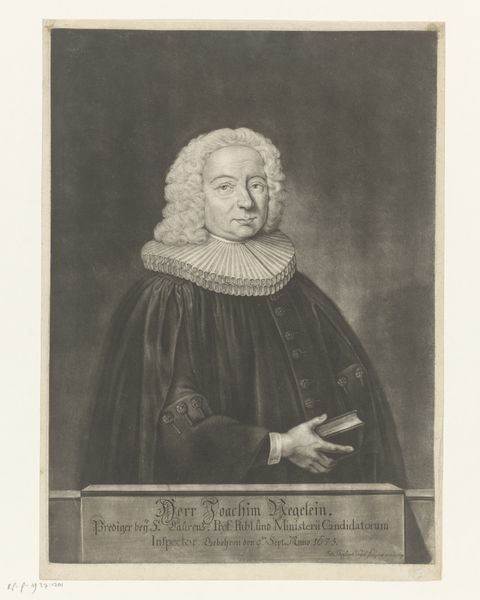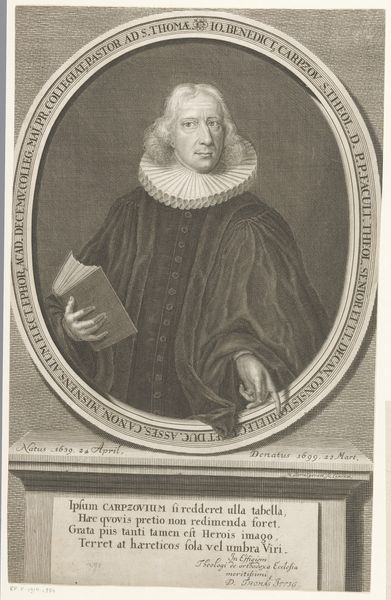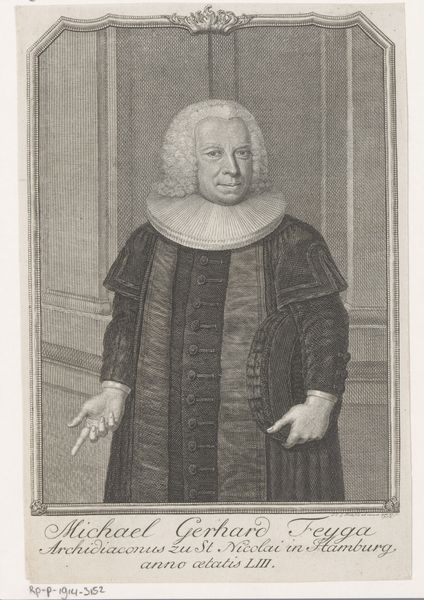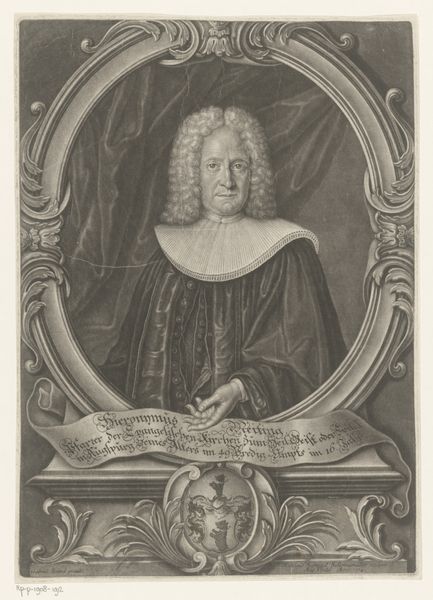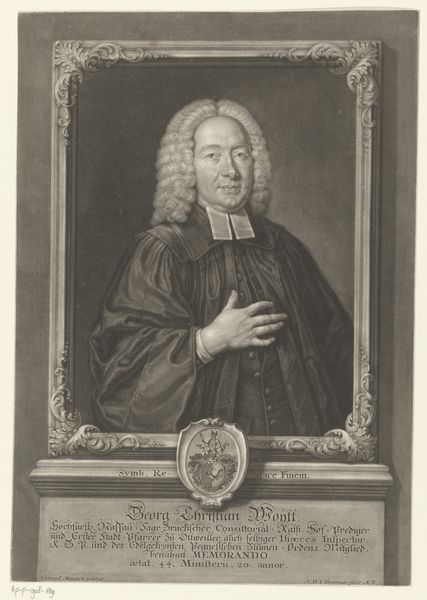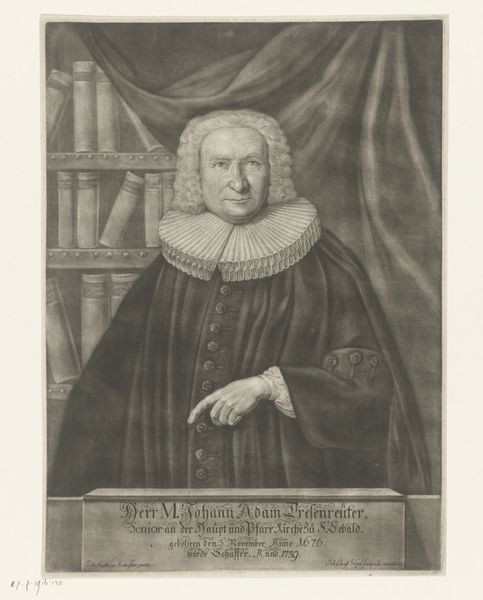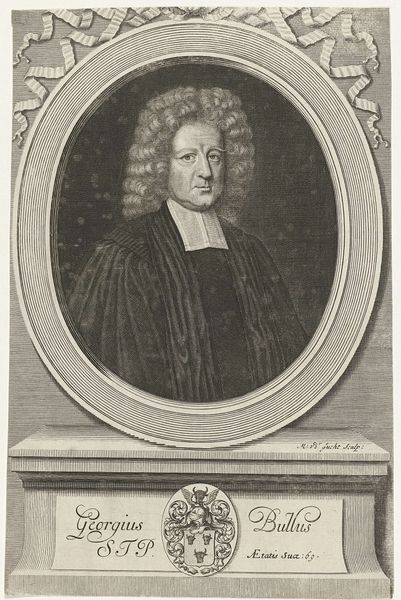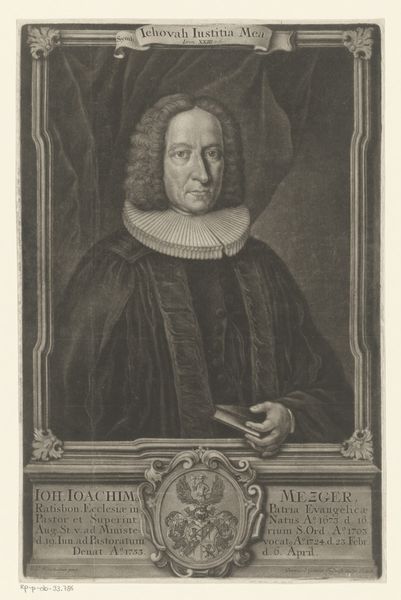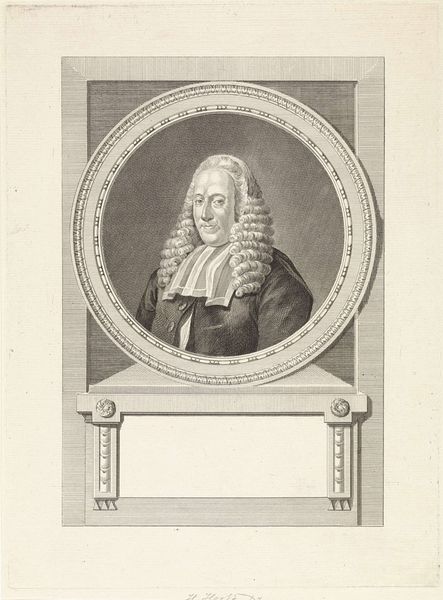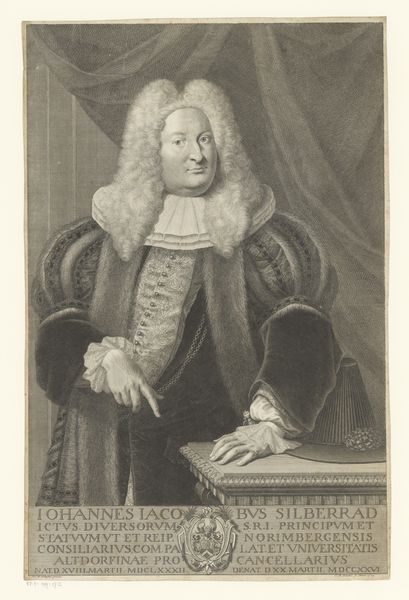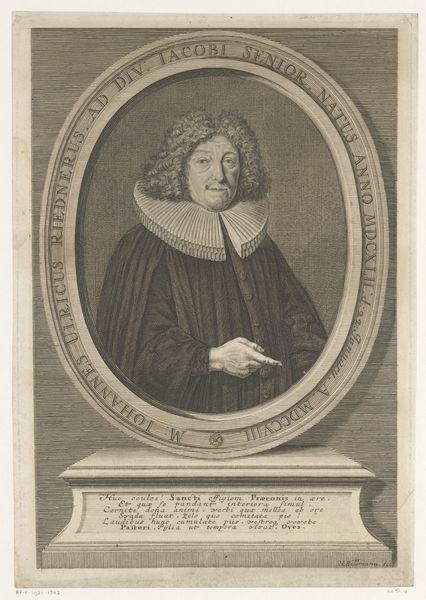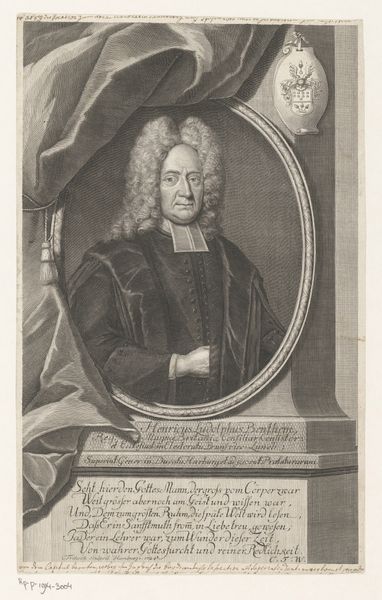
engraving
#
baroque
#
history-painting
#
academic-art
#
engraving
Dimensions: height 324 mm, width 209 mm
Copyright: Rijks Museum: Open Domain
Editor: Here we have a 1735 engraving, "Portret van Johann Melchior Grimm" by Bernhard Gottlieb Fridrich. It strikes me as very formal, almost austere, yet there's something quite dignified in the sitter's gaze. How do you interpret this work, considering its historical context? Curator: Well, let's look at some of the symbols. Notice the book, slightly ajar in his hands. Books often represent wisdom, learning, but here, considering Grimm was a minister, could it also signify divine knowledge, the word of God literally open to him, or through him, to the world? And what about the elaborate collar, a near-perfect circle? Editor: That's a good point about the book, and now that you mention it, the circular ruff collar has a rigid, almost halo-like presence. Is there something significant there? Curator: Indeed. The circle, across cultures, is a powerful symbol: eternity, wholeness, perfection. But look at the rigidity of that circle—isn't there also an element of confinement, perhaps even obligation, tied to the very ideals it’s supposed to represent? Perhaps expectations or constraints placed upon a man of God? What emotions does the framing elicit in you? Editor: I hadn't considered it in that light. I saw the frame simply as decorative, but there is something cage-like about it. It adds to the sense of formality, yes, but maybe it is also adding to the impression of imposed rules that Grimm's station implies. I thought it was a straight-forward portrait, but the symbols offer more nuances. Curator: Exactly. By recognizing such symbols we start to see layers of meaning that reflect not only the individual but the wider world of expectations and constraints that he operated within. Considering these factors can unlock a fuller sense of what Fridrich might have wished to convey. Editor: Thank you. I definitely look at this engraving in a new light. Recognizing how symbolic imagery embeds memory, belief, and even psychological nuance definitely brings art history alive.
Comments
No comments
Be the first to comment and join the conversation on the ultimate creative platform.

